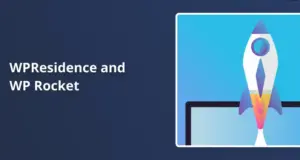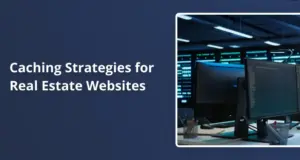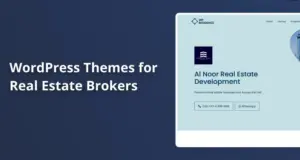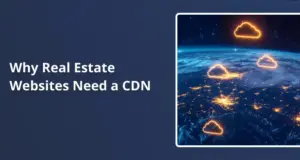Getting Started: Step-by-Step Email Automation Plan
Now that you know why email marketing is helpful and what tools you can use, let’s walk through an easy plan to set up email automation for your real estate business. This guide is perfect if you’re starting from zero. Even though it might seem like a lot at first, don’t worry. Once it’s set up, most of it runs by itself. Let’s take it one step at a time so you can follow along easily.
Step 1: Make and Organize Your Email List
Start by gathering all your contacts. If you have old client emails or leads saved in a spreadsheet or system, bring them into your email tool. If you don’t have any yet, begin collecting them:
- Add sign-up forms on your website, such as “Get New Listings” or “Sign Up for Market News.” This way, people who visit your site can join your list without you having to do anything.
- Offer something useful for free, like a home value report or a neighborhood guide. People love free, helpful stuff, especially if it helps them learn or make better decisions.
- At open houses or events, ask visitors to write down their email (on paper or a tablet). This is a great time to connect because people are already interested.
- Share your email sign-up link on social media or in ads. For example, you could say, “Don’t miss out on the best deals in your area. Join my free real estate email list!”
Make sure all these new contacts go into one main list. Then, break them into smaller groups called “segments.” This helps you send the correct info to the right people. For example:
- Buyers looking for homes
- People trying to sell
- Renters
- Investors looking to make money from real estate
- Clients you helped in the past
You can also split them by where they live, what kind of home they want, how much they want to spend, or where they are in their journey (just looking, ready to act, already bought or sold, etc.).
Why do this? Because you want to send people the right messages. Buyers and sellers need different info. If you group them well, people are more likely to read and enjoy your emails. When people like your emails, they trust you more and will likely work with you.
Segmenting your list makes your emails more powerful. Imagine sending an email about luxury homes to someone just starting to save for their first home. It wouldn’t help them. But if you send beginner tips to first-time buyers and investment ideas to investors, they’ll feel like you understand them. That builds loyalty and confidence in your services.
Step 2: Set Up Email Automation
Now, create automatic emails for each group. These are called email workflows or drip campaigns. They send messages over time without you having to do anything each day. Start with one or two easy ones:
- New Lead Drip: When someone signs up or downloads a guide, send them a welcome email immediately. A couple of days later, send tips. A week later, offer a free meeting. Keep helping them until they’re ready to work with you. This keeps you in their mind.
- Property Alerts: If someone is looking for a home, let them get alerts. When they save a search or ask for updates, they should get emails when new homes match their search. These alerts help people find what they want quickly.
- Follow-Up Emails: Send a thank-you email the day after an open house. If someone asks a question on your website, reply right away, then check in again later. Quick replies show you care.
- Special Triggers: Some tools let you send emails based on actions. If someone clicks on a link about condos, email them with condo tips the next day. Ask if they want to change their search if they haven’t seen new homes. These little touches feel personal.
Most tools let you build these email paths with a visual map. Set the trigger (like a form sign-up), then choose what emails to send and when. Start with a simple plan. You can add more steps later. Always test your emails with yourself or a coworker before going live. Pretend you’re a new customer and walk through the steps. Fix anything that seems confusing.
Automation saves a lot of time. Instead of writing each email by hand every time someone joins your list, it all happens in the background. This means you can keep working on showing homes and closing deals while your emails do the talking for you.
Step 3: Write Great Emails
Your automation will only work if the emails are interesting and helpful. If they are boring or too pushy, people won’t open them.
- Write catchy subject lines. This is the title people see first. Make it short and exciting. Try “5 Ways to Boost Home Value” or “New Homes in Your Area.”
- Make it personal. Use the person’s name and information, like: “Hi Sarah, here’s what’s new in your neighborhood.” Personalized emails feel more like conversations.
- Match content to their group. First-time buyers might need a simple guide. Investors might want deep market info. Give each group what they care about.
- Be helpful, not salesy. Share useful info, such as guides, news, or local tips. Try the 80/20 rule: 80% helpful content, 20% offers. This builds trust.
- Add clear buttons or links. Ask them to do one thing: view homes, download something, or set up a call. Make your button easy to find and understand.
- Make it look nice. Use a clean design. Add your logo and some pictures of homes. Emails should also be easy to read on phones. A messy or plain email might be ignored.
Also, remember to stop emails if someone replies or becomes a client. Many tools can do this automatically. You don’t want to keep sending beginner tips to someone who bought a house!
The best emails sound friendly, clear, and helpful. Use simple language. Avoid big words or complicated terms. Think of how you would talk to a friend asking for help buying a home—then write like that.
Step 4: Watch and Improve Your Emails
Once your emails are working, you must check how they’re doing. Keep improving them to get the best results:
- Track numbers: How many people open your emails, click links, or unsubscribe? If one email has a low opening, change the subject line.
- Test two versions: Try two different subject lines or messages and see which works better. Small tests can make a big difference.
- Fix your groups or timing: Maybe some people are in the wrong group, or you’re sending emails at bad times. Use your data to make changes. Try sending at different times of the day.
- Update old emails: Things change. Every few months, read your emails and see if they need updates. Maybe the market changed, or you have better info to share.
- Grow what works: If your buyer drip is going great, make one for sellers. Add fun new things, like birthday wishes or a 6-month check-in. The more you improve, the brighter your system gets. You could even add holiday messages or fun facts about your city.
Extra Tips to Make Your Email Marketing Awesome

Finally, here are some key tips and best practices to make your email marketing automation as effective as possible:
- Make it feel personal: Even though the emails are automated, make each one feel like it’s just for that person. Use names and send the right content to each group. People like emails that feel made for them. You can even include small talk like “Hope you’re enjoying the sunny weather this week!”
- Follow the rules: Don’t add people to your list unless they say it’s okay. Always include an “unsubscribe” link and your office address. If you have contacts from Europe, follow GDPR rules too. Most email tools help you do this. Respecting privacy builds trust.
- Connect your tools: Link your email tool to your contact system (CRM). This way, new leads go straight into the proper email flow. If someone becomes a client, you can stop the lead emails and start new ones.
- Always give value: Don’t just send listings. Share articles, tips, success stories, or videos. Make your emails useful and fun to read. To keep it light, you can even share funny home stories or real estate trivia.
- Don’t spend too much: Daily emails can annoy people. For general info, send it every few days or once a week. Send right away for things like new listings or events. Also, choose good times—mid-morning or early evening often work best. Think about when you’d want to get an email.
- Keep testing: Try new subject lines or formats. Ask for feedback sometimes. For example, include a small survey asking, “Was this email helpful?” You’ll keep getting better over time, and your audience will tell you what they like.
- Clean your list: Remove people who never open emails. Fewer readers who care are better than a huge list of people who ignore you. A clean list helps your emails land in inboxes instead of spam folders.
Email automation takes a little time initially, but it’s worth it. Once it’s set up, it works by itself. That means you can focus on meeting people and closing deals. Real estate is about relationships, and email automation helps you stay in touch with everyone at the right time. You can remind past clients you’re still there or help a new buyer feel confident.
This tool works while you sleep. It helps you stay in front of people without spending all day writing emails. When done right, your emails will make people feel like they’re getting one-on-one help, even though they’re automatic.
With this guide, you can build brilliant email campaigns that grow your business. Don’t wait for the perfect moment. Start simple and improve as you go. You’ll be amazed at how easy staying organized, professional, and in touch is.
You have the power to build lasting relationships with just a few clicks. Email marketing isn’t just about selling—it’s about connecting. Keep learning, stay creative, and have fun along the way.
Good luck, and happy emailing!
Click here to read Part 1









